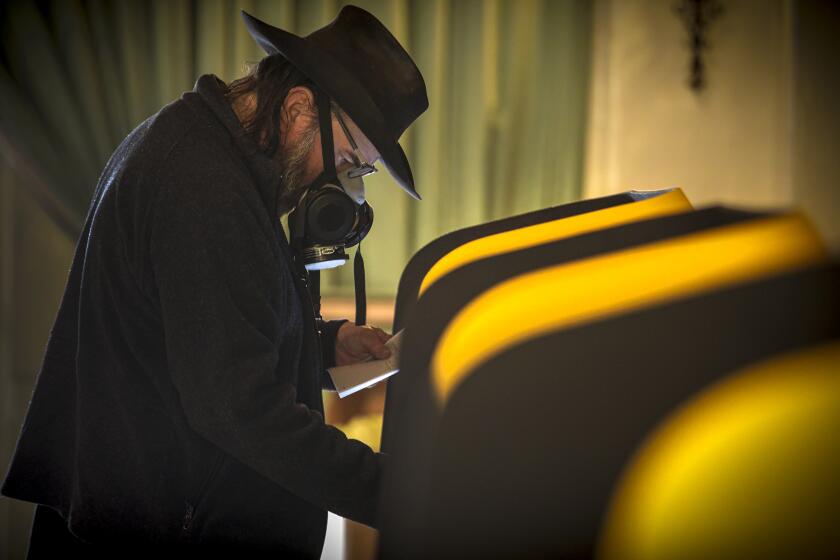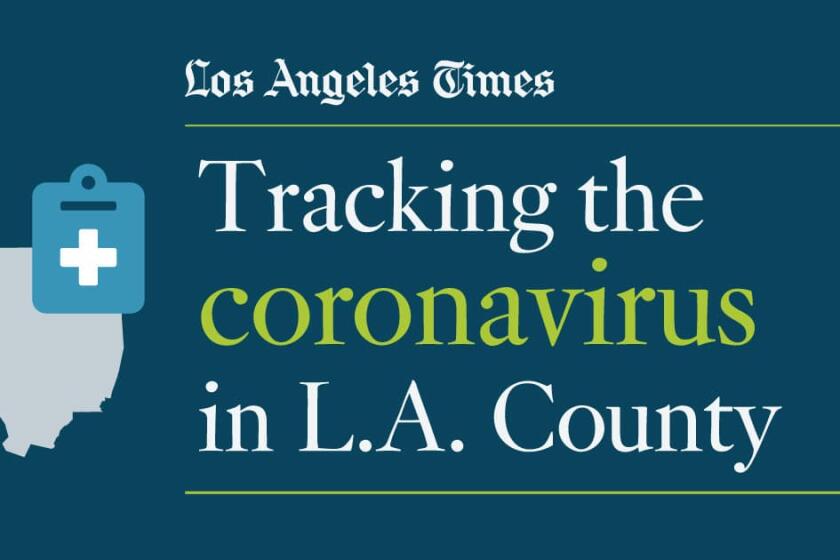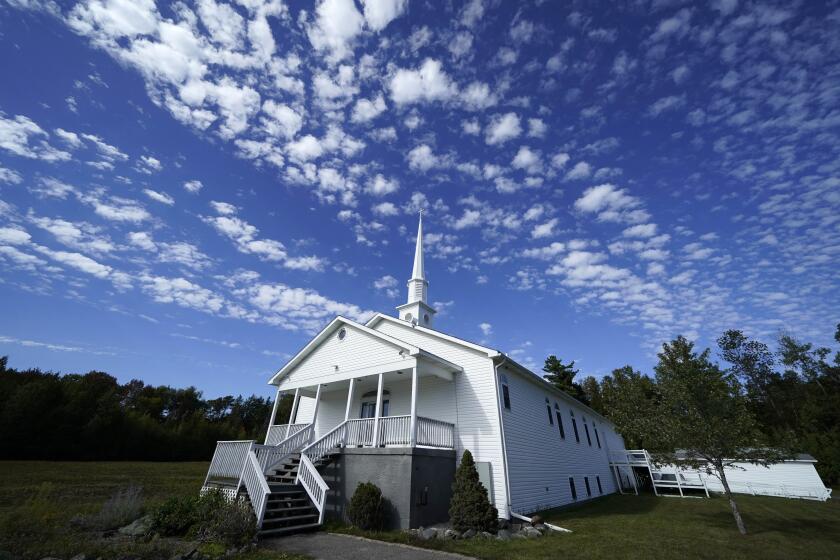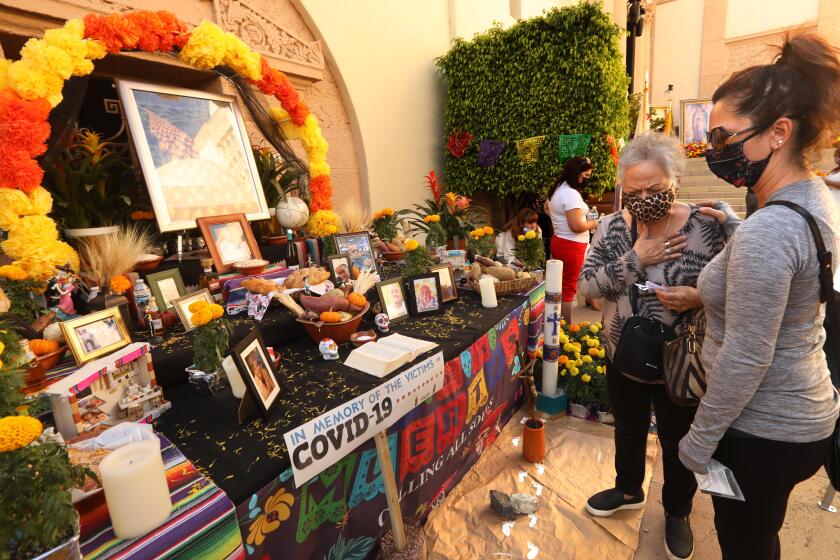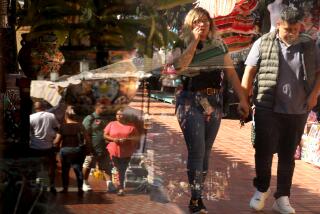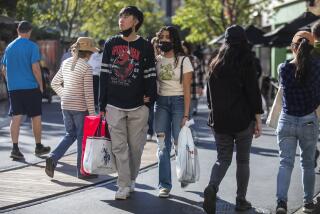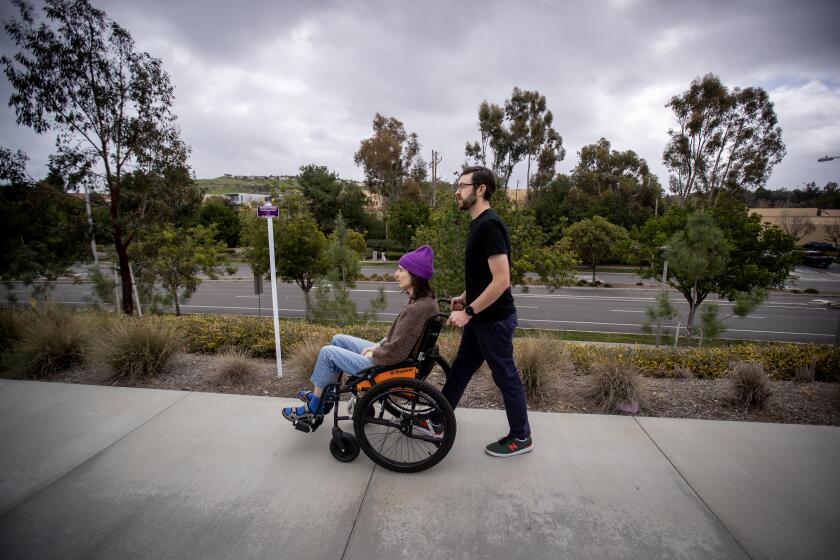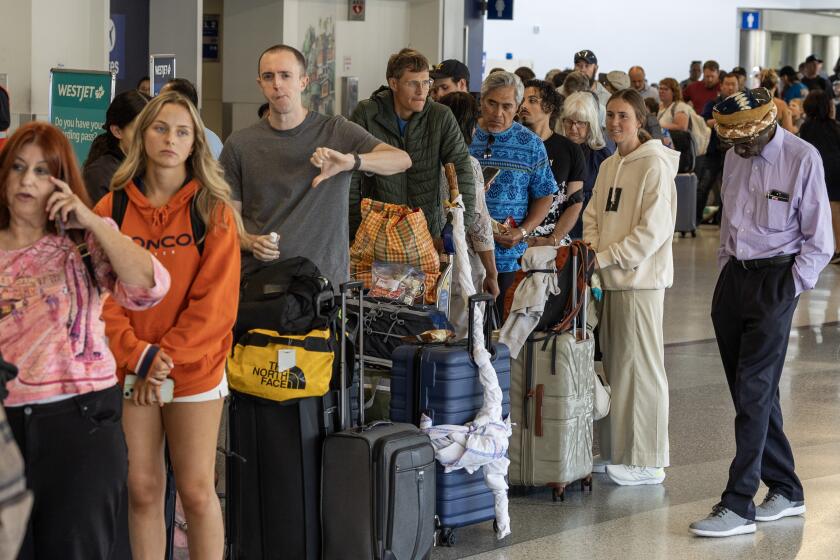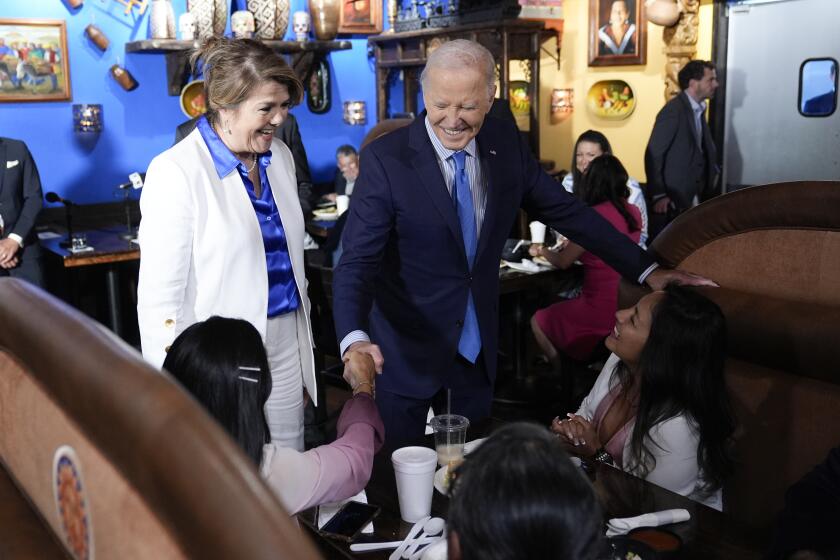L.A. County’s hope for fast reopening fades as coronavirus cases continue to climb
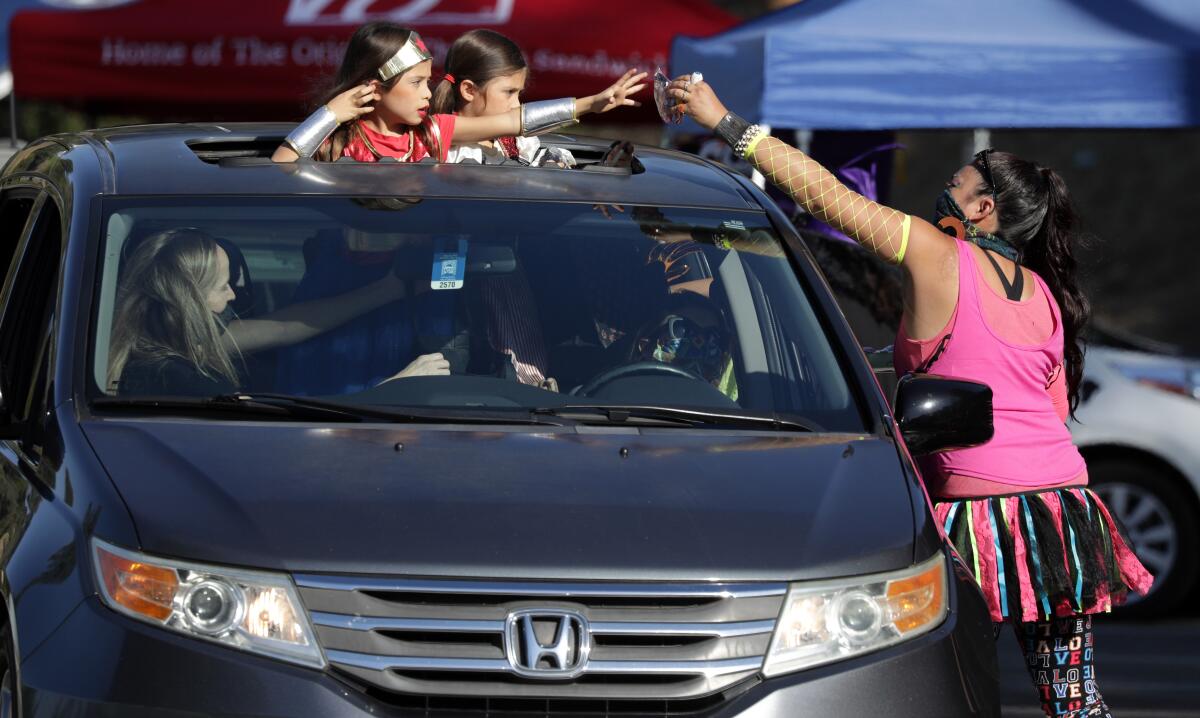
Hopes that a wider reopening of Los Angeles County’s economy could come in time for the holidays appear to be fading, as the region continues to see a steady uptick in the average number of daily coronavirus infections.
While the spike is nowhere near as severe as those in other parts of the country, L.A. County’s seven-day average has increased from about 940 new cases a day in early October to more than 1,275 each day as of last week, health officials said.
L.A. County Public Health Director Barbara Ferrer announced 1,406 new COVID-19 cases Monday, following 1,590 on Sunday. The county’s total now tops 310,000.
Los Angeles, Orange, Riverside and San Bernardino counties are all reporting increases in case rate.
The county typically reports fewer new cases on Sunday and Monday because of reporting lags over the weekend, “so, if that trend holds true, we’re going to see higher numbers the rest of the week,” Ferrer said during a briefing.
“Our cases are, at best, stabilizing at a high number,” she said. “At worst, they’re going to go up.”
Any increase in the coronavirus case load threatens to push the county further from being able to more widely reopen businesses and other public facilities.
In California’s four-tier reopening roadmap, L.A. County remains firmly in the most restrictive Tier 1 (purple). Counties in that category have an average of more than seven new infections for every 100,000 residents, or the percentage of tests that detect the virus is more than 8%.
Case rates are adjusted to account for how much testing is being done. L.A. County’s adjusted case rate increased last week to 8 from 7.6 the week before.
The latest maps and charts on the spread of COVID-19 in Los Angeles County, including cases, deaths, closures and restrictions.
To progress to a less-restrictive tier, a county must meet the next tier’s criteria for two straight weeks. Given the direction L.A. County is heading, it’s “unlikely, then, in the next two weeks that we make any movement,” Ferrer said.
She stressed, though, that the decisions residents make today are significant in determining whether the county moves forward. Choosing to follow health protocols — maintaining physical distance, wearing face coverings in public, washing hands regularly and limiting mixing with other households — can help the county get back on the right path.
“We do appreciate that we’re months into this, nine months in now, and we have to find ways for us to do some of the activities that are essential to our well-being, but we have to do those in ways that minimize risk,” Ferrer said.
Though small-scale gatherings of no more than three households may be held outdoors with limitations — including time restrictions, required face coverings and physical distancing — the county continues to see evidence linking coronavirus transmission to people mingling together without following the rules, Ferrer said.
“While it’s easy to believe that the virus won’t spread among your families and friends, and that none of you are infected, there are so many examples that prove otherwise,” she said.
L.A. County’s public health director explains how family celebrations and other gatherings could turn into potentially deadly coronavirus outbreaks.
The potential for gatherings to serve as conduits for coronavirus spread is particularly concerning heading into the end of the year, which will bring cooler weather that will move people indoors and holidays at which people traditionally gather.
Residents also could be tempted to celebrate or commiserate depending on how they feel about the results of Tuesday’s election. But they must take precautions and follow public health guidance if they plan to do so.
“Simply put, you make the choice to protect other people or potentially infect other people with the actions you’re taking every single day,” Ferrer said.
While people may be growing weary of following the same guidance that has been in place for months, adhering to infection prevention measures is the key to moving closer to normalcy, Ferrer said.
“This is a pandemic of a magnitude we have never experienced in our lifetimes, and the faster we get it under control, the faster we return to being able to do the types of things we love to do,” she said.
California has escaped the glaring spikes seen in many parts of the U.S., but health officials warn residents and businesses to keep up the vigilance.
But it’s also important to “recognize how well California is doing,” said Paula Cannon, a professor of molecular microbiology and immunology at the Keck School of Medicine at USC.
“Take a look at the graphs and the charts for California compared to many, many other states, and just recognize that for the most populous state and for the most populous city in the most populous state ... we are doing a phenomenal job,” she said in a recent interview.
Roughly 97,000 new COVID-19 cases were reported nationwide Friday — an all-time high, according to the COVID Tracking Project. The previous record, about 88,500, had been set the day before.
Though widespread, the latest surge is not affecting all states uniformly. Texas, for instance, has recently seen its coronavirus case count climb substantially — so much that it has officially surpassed California as the state with the highest number of cumulative confirmed infections, despite having 10 million fewer residents, data compiled by The Times show.
That’s not to say “everybody can let their guard down,” Cannon emphasized, but Californians should “recognize that this is working. All the sacrifice is meaningful, and it’s working.”
More to Read
Sign up for Essential California
The most important California stories and recommendations in your inbox every morning.
You may occasionally receive promotional content from the Los Angeles Times.
